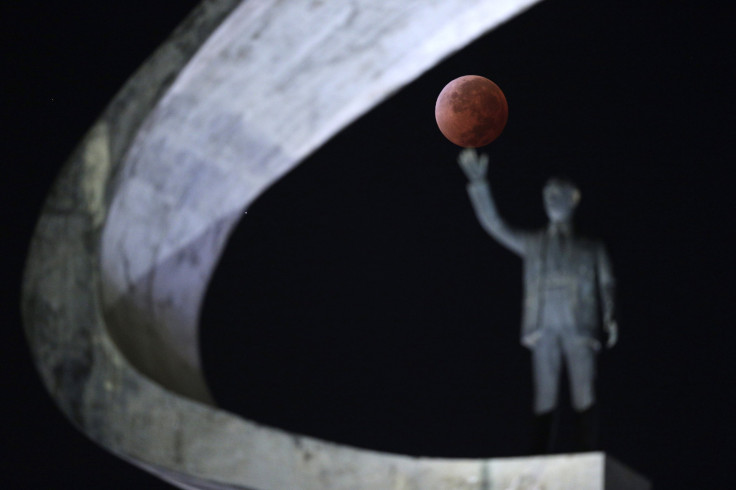Blood Moon Returns: Total Lunar Eclipse Set For Wednesday, Conspiracies, A Selenelion And More

A total lunar eclipse, or blood moon, will take place Wednesday and will be visible across the United States. Viewers will have to wake up early, as totality begins at 6:25 a.m. EDT and the lunar eclipse could be even more special if a selenelion occurs.
A total lunar eclipse is when a full moon passes behind Earth's shadow. The moon, sun and Earth are in alignment and will appear red, hence the "blood moon" moniker. To understand why the moon will have a red or rust tinge, NASA suggests pretending to stand on the lunar surface. Looking at Earth during the lunar eclipse, one can see every sunset and sunrise and that light is projected onto the moon. The last total lunar eclipse took place on April 15.
Total Lunar Eclipse Visibility
For the East Coast of the United States, the moon will be low on the horizon while the West Coast will see the moon higher in the sky beginning at 6:25 a.m. EDT. Interestingly, the blood moon will include shades of turquoise, making the total lunar eclipse that much more colorful. "During a lunar eclipse, most of the light illuminating the moon passes through the stratosphere, where it is reddened by scattering. However, light passing through the upper stratosphere penetrates the ozone layer, which absorbs red light and actually makes the passing light ray bluer," Richard Keen of the University of Colorado said in a statement.
North America and most of South America can view the eclipse at moonset while India, Asia and Australia can view the eclipse at moonrise. It will not be visible in Africa and Europe.
Wednesday's total lunar eclipse could also be a selenelion, Space.com reports. A selenelion occurs when a viewer can see the total lunar eclipse and the sun at the same time. There is a very small window of time the phenomenon can be viewed -- between 10 to 15 minutes before sunrise, Space.com says.
Blood Moon Conspiracy
No astronomical event would be complete without some far-fetched theories about the phenomenon. This time it's about October's total eclipse being part of a tetrad, or four consecutive eclipses each six months apart. The first of the series took place in April and the next total lunar eclipse will occur in April 2015.
When news of the lunar tetrad surfaced earlier this year, John Hagee, the San Antonio pastor who wrote the book "Four Blood Moons: Something Is About to Change," began discussing a blood moon conspiracy. "Every time this has happened in the last 500 years, it has coincided with tragedy for the Jewish people, followed by triumph. And once again, for Israel, the timing of this tetrad is remarkable," said Hagee in April.
Lunar tetrads can be relatively common -- there have been eight in the 21st century -- and there are at least two total lunar eclipses each year. NASA's video explaining Wednesday's total lunar eclipse can be viewed below.
© Copyright IBTimes 2025. All rights reserved.






















